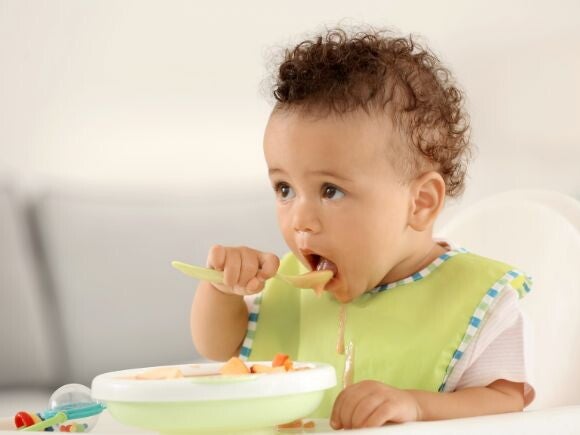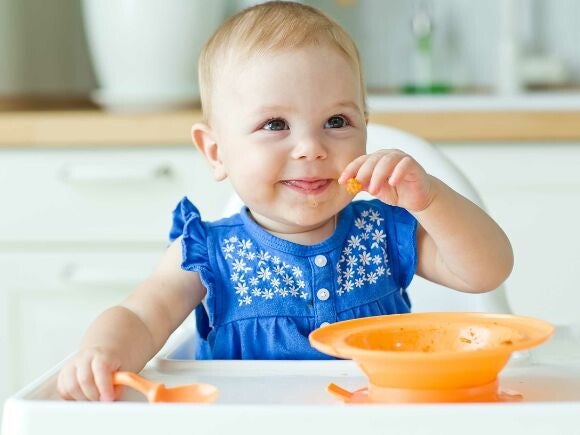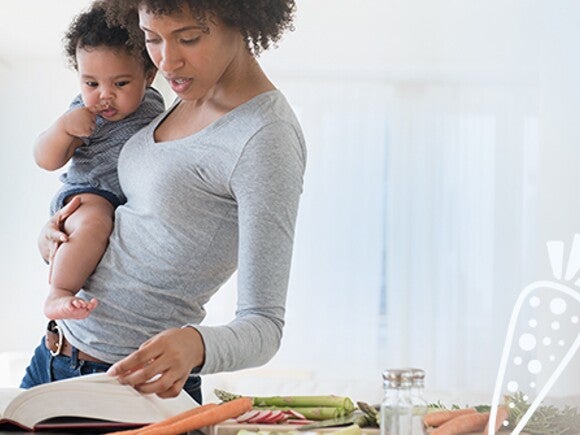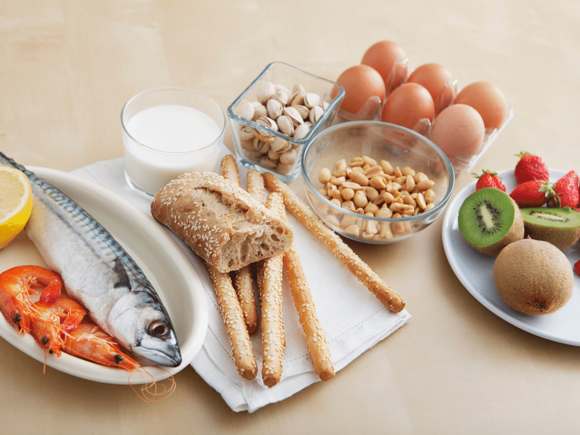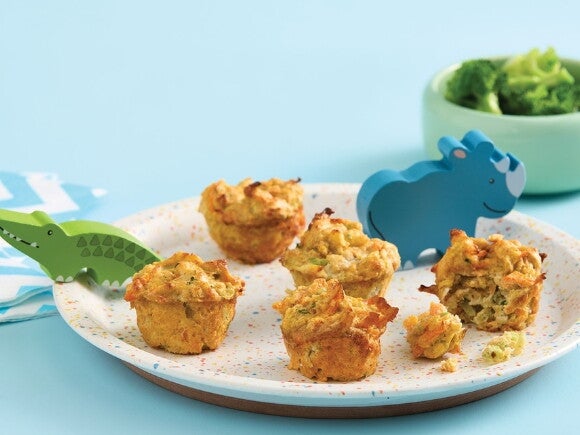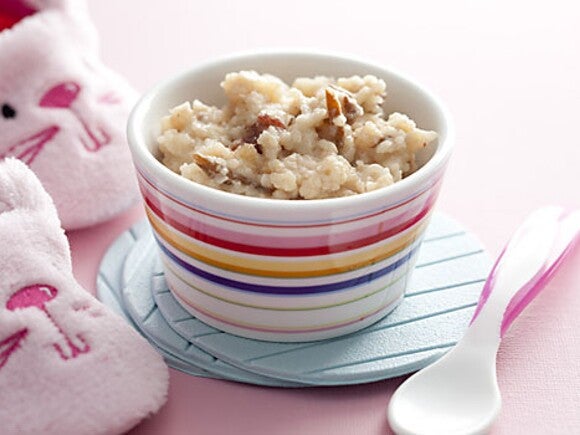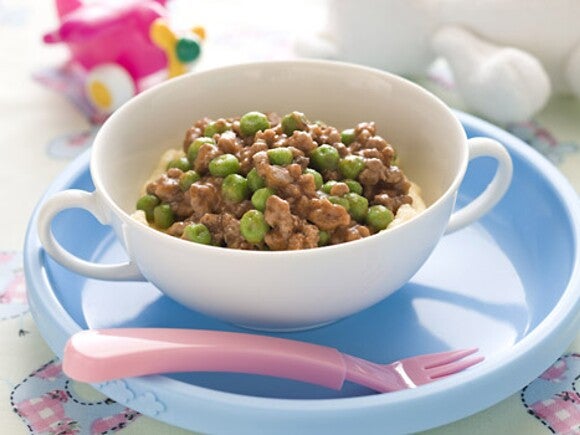Consistency: Lumpy, textural foods promoting chewing and soft finger food
Introduce a range of temperatures: Cold, room temperature and warm (note never give babies hot food and always test the temperature yourself before giving it to baby).
Amount: Up to 1 cup at meals and ½ cup snacks
Breastfeeds: 3 per day
Timing: Before or between breastfeeds
Frequency: 3 times a day plus 1 snack
Type of foods: Increase variety of foods, add legumes, variety of grains and cereals, fruits such as berries and citrus fruits, and stronger flavoured vegetables such as onion, and harder to eat vegetables such as sweet corn, shredded salad greens, spinach, tomato. Introduce eggs, and ground nuts and seeds, as well as cooked milk products in small amounts.
Check out our 10-month-old food ideas.
Note: Always seek individualised advice when you have a family history of allergy, intolerance, coeliac disease or your baby is suspected to have feeding delays (such as tongue tie or physical or mental disabilities).
FAQs
How much should an 8-month-old eat?
At 8 months old, your baby's food menu and appetite should vary, but on average they may be eating about 3-4 tablespoons of solid food per meal, 2-3 times a day. Continue to breastfeed or provide infant formula as the main source of nutrition at this age still. Offer a variety of foods, including fruits, vegetables, grains, and proteins. Consult with a nutrition professional for personalised guidance based on your baby's growth and development. Check out our cheesy pea and mushroom risoni recipe, perfect for your 8-month-old.
What to feed a 9-month-old?
The variety of food ideas for a 9-month-old will continue to grow as your baby also grows. They will enjoy a variety of foods from all the food groups, to ensure they get all the nutrition they need to grow and develop. At 9 months, your little one is starting to master some of the earlier challenges of self-feeding so you may find you can start introducing more roughly mashed, or soft finger foods into their diet. Breast milk or infant formula will continue to be their main source of nutrition at this age, and always supervise your baby during mealtimes. For some more 9-month-old food ideas, check out our recipes.
How much should a 10-month-old eat?
At 10 months old, your baby’s food menu will continue to grow in diversity and volume. The types of foods you introduce, and the volume of food will increase over time but should still include a variety of foods from all the food groups. All children are different, however at around 10 months of age you may start to notice your 10-month-old meal plan is growing in size and includes around ¼ to ½ cup of solid food per meal, 2-3 times a day, along with breast milk or formula. Check out this great corn fritter recipe your 10 month will love.
